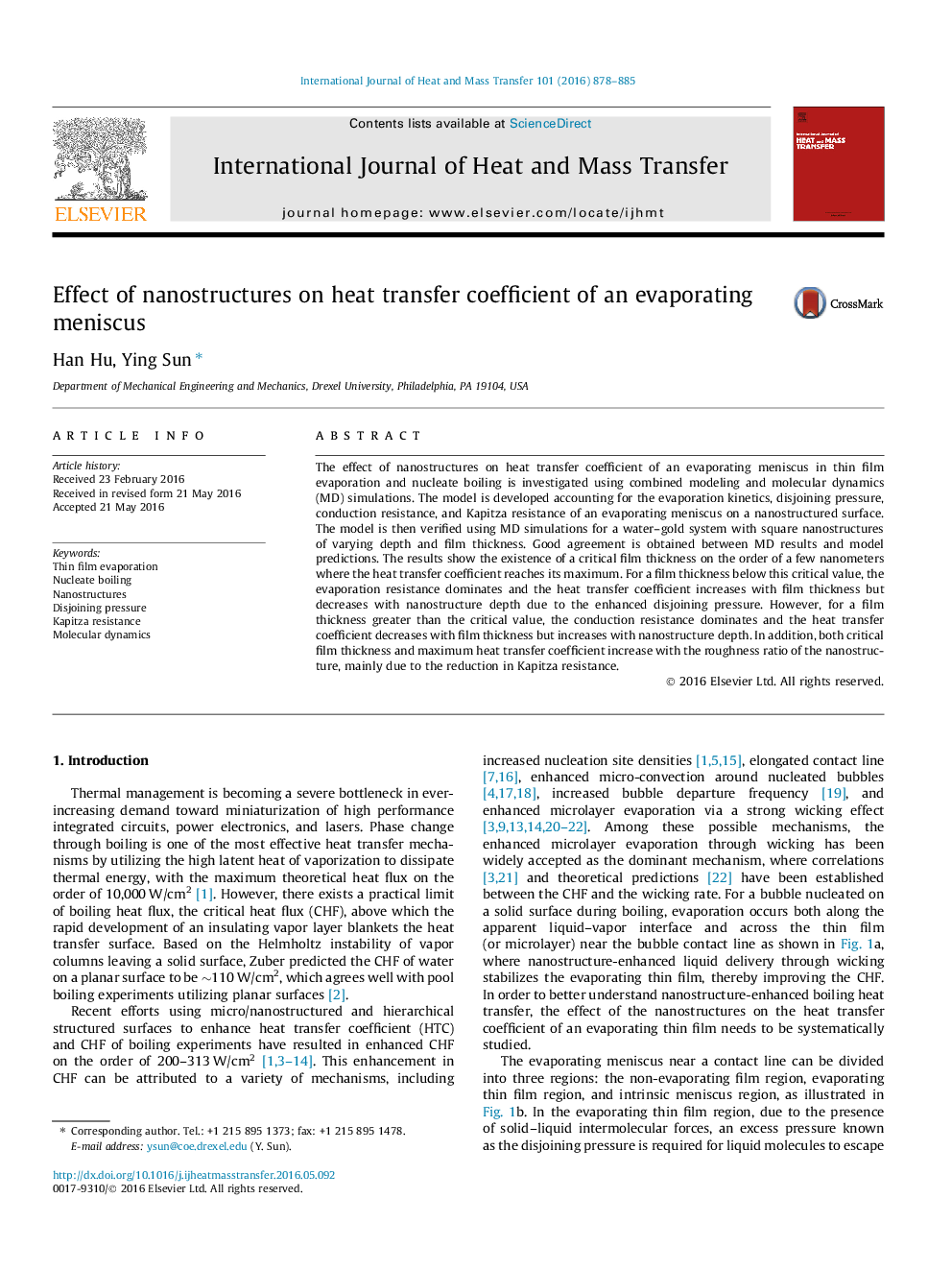| Article ID | Journal | Published Year | Pages | File Type |
|---|---|---|---|---|
| 7055400 | International Journal of Heat and Mass Transfer | 2016 | 8 Pages |
Abstract
The effect of nanostructures on heat transfer coefficient of an evaporating meniscus in thin film evaporation and nucleate boiling is investigated using combined modeling and molecular dynamics (MD) simulations. The model is developed accounting for the evaporation kinetics, disjoining pressure, conduction resistance, and Kapitza resistance of an evaporating meniscus on a nanostructured surface. The model is then verified using MD simulations for a water-gold system with square nanostructures of varying depth and film thickness. Good agreement is obtained between MD results and model predictions. The results show the existence of a critical film thickness on the order of a few nanometers where the heat transfer coefficient reaches its maximum. For a film thickness below this critical value, the evaporation resistance dominates and the heat transfer coefficient increases with film thickness but decreases with nanostructure depth due to the enhanced disjoining pressure. However, for a film thickness greater than the critical value, the conduction resistance dominates and the heat transfer coefficient decreases with film thickness but increases with nanostructure depth. In addition, both critical film thickness and maximum heat transfer coefficient increase with the roughness ratio of the nanostructure, mainly due to the reduction in Kapitza resistance.
Keywords
Related Topics
Physical Sciences and Engineering
Chemical Engineering
Fluid Flow and Transfer Processes
Authors
Han Hu, Ying Sun,
